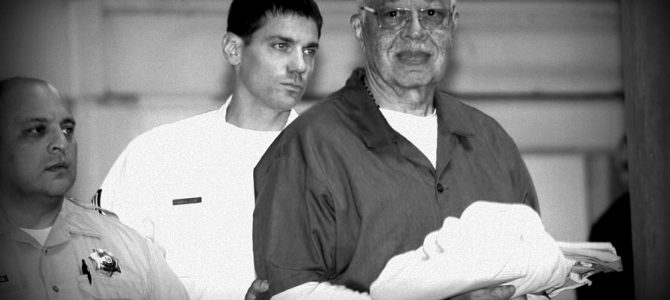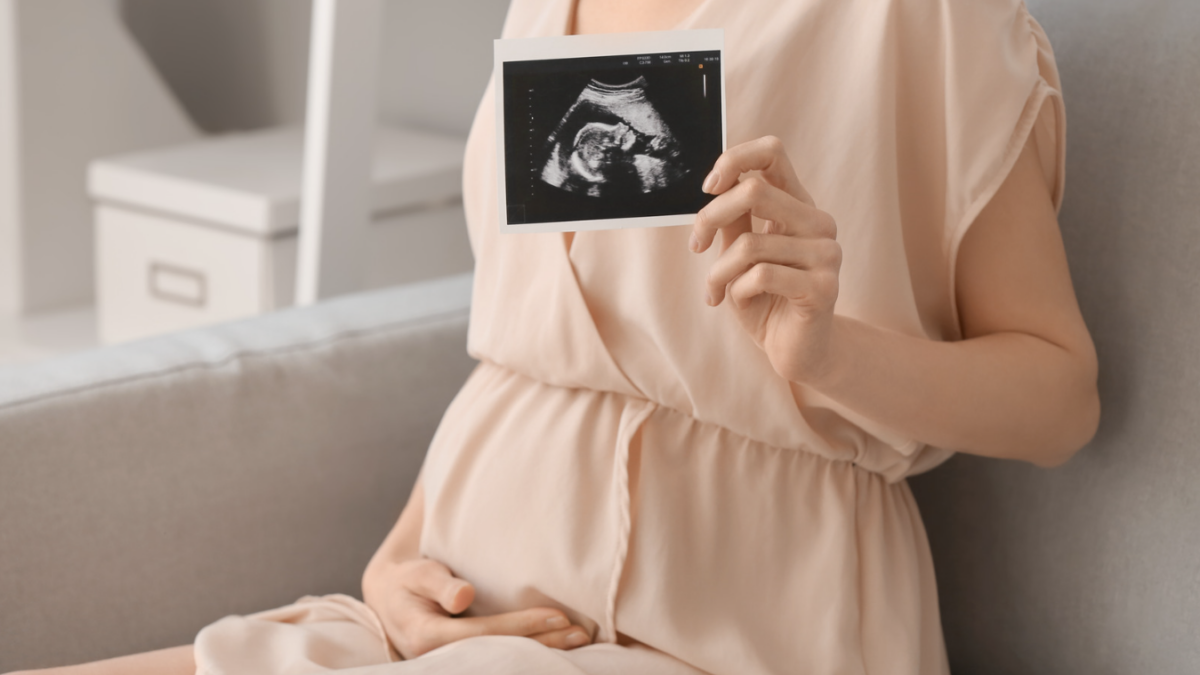
A grand jury report released ten years ago introduced the world to Kermit Gosnell, an abortionist from West Philadelphia who killed born-alive babies, employed teens with no medical experience as anesthesiologists, and crushed countless lives for more than 30 years. For years, government officials and others turned a blind eye to Gosnell’s “House of Horrors.”
While some progress has been made in the last 10 years on reducing such atrocities, the conditions that allowed Gosnell to operate his house of horrors are still largely present. The discovery of his case has largely not led to desperately needed changes.
We Can’t Forget the Charismatic Sociopath
On Jan. 19, 2011, members of a Pennsylvania court of common pleas grand jury released a scathing 261-page report on the grotesque details of an abortionist “who killed babies and endangered women.” This so-called doctor, Gosnell, was accused of a host of crimes, including the murder of born-alive babies.
For more than three decades, Gosnell ran an abortion business called the Women’s Medical Society. He had built a reputation across the East Coast as a late-term abortionist. According to staff members, the number of abortion procedures Gosnell performed on women well past 24 weeks of gestation, Pennsylvania’s legal limit, is too many to count. Many of these “unwanted babies” were killed not by the abortion procedure, but by the backs of their necks being snipped with scissors after being born alive.
Along with Gosnell, nine of his employees were arrested, including staffers who had no medical experience but were making diagnoses and assisting late-term abortion procedures. A 15-year-old with no training was administering anesthesia, which resulted in at least one woman’s death.
Gosnell’s abortion practice — described as a “baby charnel house” — was only discovered by accident. The FBI raided Gosnell’s office based on tips he was illegally selling Oxycontin. Gosnell was a drug dealer by day and a late-term abortionist by night; he made $10,000-$15,000 a night on abortions. He became a millionaire from killing babies and fueling the opioid crisis.
Astonishingly, Gosnell considered himself innocent. He rejected a plea deal and elected to go to court. After five weeks of testimony, the jury found Gosnell guilty of three counts of first-degree murder and was sentenced to life in prison without parole plus an additional 30 years.
See No Evil
So many people could have stopped Gosnell and his heinous acts but didn’t, including the Pennsylvania Department of Health, the Department of State, local hospitals, Planned Parenthood, and the National Abortion Federation.
“Gosnell didn’t operate out of a back alley,” stated David Altrogge, a filmmaker who interviewed Gosnell for a documentary entitled “3801 Lancaster” (the address of Gosnell’s clinic). “His clinic was on a busy street in West Philadelphia, just a stone’s throw away from Drexel University. And the raid in 2010 wasn’t the first time that authorities had heard about Gosnell. According to the grand jury’s report, authorities looked the other way for more than 20 years.”
State officials “sporadically inspected and approved” Gosnell’s clinic between 1978 and 1993. Under Gov. Tom Ridge’s administration, a new unwritten protocol was instituted that eliminated inspections, as they were perceived to create a barrier to obtaining an abortion. As a result, the next time state inspectors went to Gosnell’s clinic was more than 17 years later.
The grand jury report was released around the same time Tom Corbett was sworn in as Pennsylvania’s next governor. Corbett took action by firing six state employees immediately along with eight additional employees who needed a lengthier dismissal process.
These included Secretary of the Department of State Basil Merenda, Deputy Secretary to the Department of Health Stacy Mitchell, and chief counsel for the Department of Health Christine Dutton. In defending the state’s decision not to investigate after women died at Gosnell’s clinic, Dutton said, “People die.”
No further action was taken against state employees linked to Gosnell who had since retired, such as Department of Health inspector Janice Staloski, who approved Gosnell’s clinic after her 1992 inspection and declined to investigate Gosnell after Karnamaya Mongar died from a botched abortion in 2009. Staloski spent 35 years as a state employee, ending her career in March 2011.
Gosnell was only charged with eight murders because of the lack of existing records, but self-reported more than 40,000 abortions through 2009.
One Big Change
The Gosnell grand jury, a group of people who covered “a spectrum of personal beliefs about the morality of abortion,” gave 15 recommendations, one of which became law after nearly a year-long debate in the Pennsylvania state legislature: Classifying abortion clinics as ambulatory surgical facilities.
Page 249 of the grand jury report shares this recommendation:
The regulations for Pennsylvania’s ambulatory surgical facilities — which run over 30 pages — provide a comprehensive set of rules and procedures to assure overall quality of care at such facilities. The effect of the Department of Health’s reluctance to treat abortion clinics as ASFs was to accord patients of those facilities far less protection than patients seeking, for example, liposuction or a colonoscopy. … Those clinics, unlike abortion facilities, must implement measures for infection control. They must use sterile linens. They must keep premises and equipment clean and free of vermin, insects, rodents, and litter. The regulations devote three pages to anesthesia protocols. … Gosnell’s facility fell far below the basic, minimum standards of care that any patient having a surgical procedure should expect to receive. There is no justification for denying abortion patients the protections available to every other patient of an ambulatory surgical facility, and no reason to exempt abortion clinics from meeting these standards.
Planned Parenthood and the abortion industry fought this recommendation tooth and nail, decrying these standards as “dangerous” and “unnecessary.” Thankfully, the General Assembly saw past the abortion lobby, passed the upgraded regulations and the newly-elected Corbett signed the bill into state law.
When other states began to take similar actions, lawsuits and court decisions began to halt progress. In June 2016, the U.S. Supreme Court overturned a Texas state law that mandated abortion clinics follow ambulatory surgical facility standards. Planned Parenthood and the abortion lobby had screamed that it placed undue burdens on women. Sadly, the Supreme Court agreed:
‘This Supreme Court decision [striking down the Texas law] makes it clear our country hasn’t learned what happens when we make women’s access to abortion a higher priority than women’s safety,’ shared [film maker David] Altrogge. ‘It’s only a matter of time before our nation has another abortion clinic disaster like we had in Philadelphia.’
Experience has shown that the Pennsylvania regulations can work. Two abortion clinics were forced to close upon the law taking effect in 2012, both owned by infamous late-term abortionist Steven Brigham. In 2017, with no OB/GYN or registered nurse on staff, the Hillcrest Women’s Medical Center in Harrisburg failed its state inspection and had its license revoked. Truly, everyone in Pennsylvania should be glad these common-sense regulations are now in place.
Ugly Realities
The grand jury report summarized Gosnell’s case by pointing to the “disdain for the lives and health of mothers and infants.” Yet today, the same sort of disdain for human life is still happening in Pennsylvania — at one of the state’s top universities.
In 2020, the University of Pittsburgh published research on humanized mouse models — a process that included grafting the scalps of aborted babies at 18-20 weeks in pregnancy onto the backs of rats. The first image in the study, funded by taxpayers through the National Institute of Health, shows multiple “human skin appendages.” The study also used other parts of aborted babies, including livers and spleens.
Magee-Women’s Hospital, which performs between 500-700 abortions every year, the most for any hospital in Pennsylvania, supplies the aborted babies used by the University of Pittsburgh.
While Gosnell took aborted babies for profit and kept parts of their bodies in jars, the University of Pittsburgh uses Planned Parenthood staff it employs to take aborted babies for science and graft parts of their bodies onto rats.
If this isn’t disturbing enough, Pennsylvania is also witnessing an increase in women being harmed by abortion procedures. Beyond a woman’s emotional toll from having an abortion, data from 2019 shows triple the number of Pennsylvania’s women having complications from chemical (medical) abortions compared to 2017. That’s triple the number of women ending up in the hospital with parts of their aborted baby still inside them or excessive bleeding due to their chemical abortion.
A primary risk with chemical abortions is a miscalculation of the gestational age of the baby. Pennsylvania lawmakers acted to limit this risk by recently voting to end the use of telemedicine for abortions. It was vetoed, however, by pro-abortion Pennsylvania Gov. Tom Wolf. Sadly, it’s evidence of profits and party politics over women’s health and safety.
Ten years later, most of the conditions that allowed for such a monster Gosnell have not changed. That’s largely thanks to Pennsylvania Democrats, who are presiding over an increase in botched abortions while claiming to be part of a party that cares about women and children.









